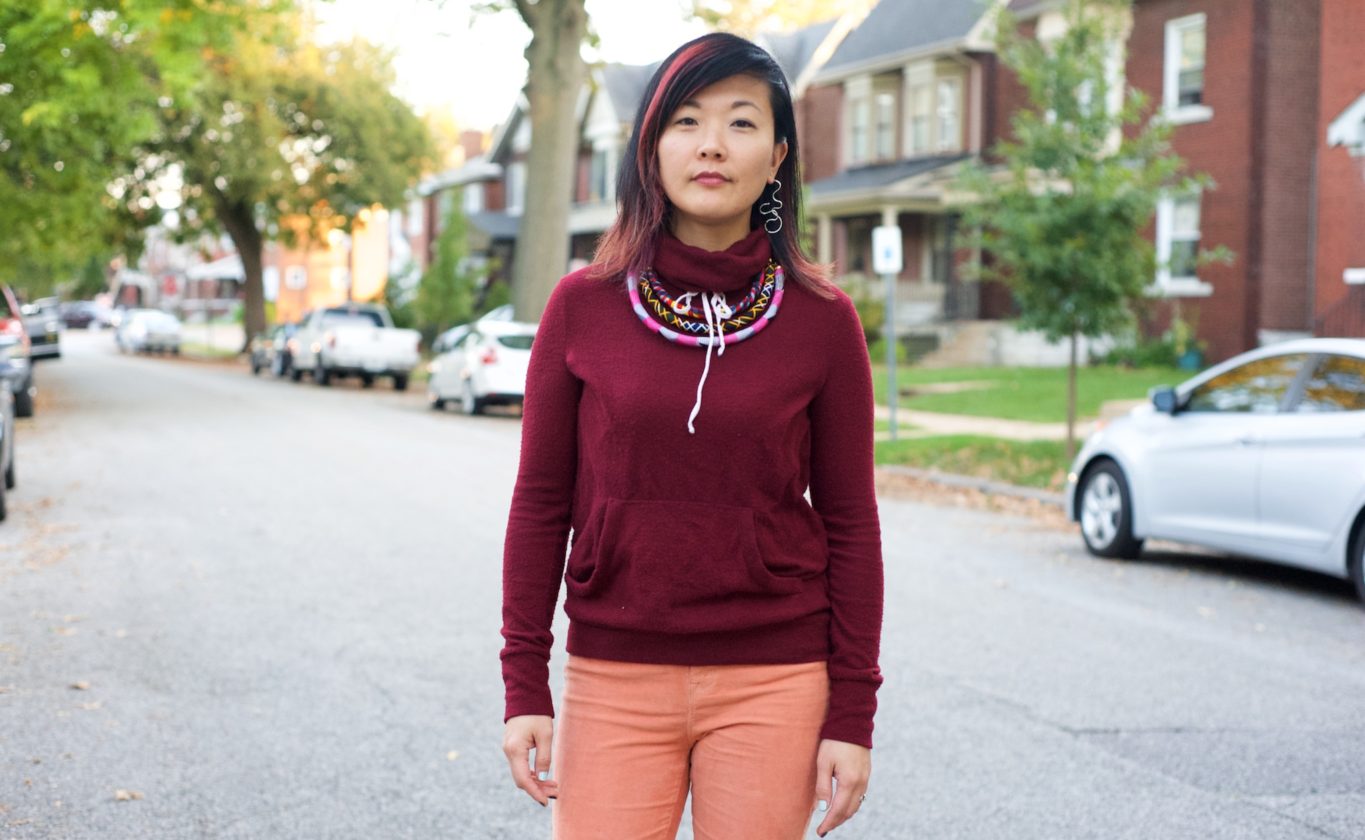I work at the School District of Clayton at Wydown Middle School and teach 6th and 7th grade. For a long time, I taught history and now I teach literacy. On Tuesdays, I sponsor a club called Social Justice League. I’ve been doing it for maybe four years. It branched out of a seminar I attended with Educational Equity Consultants which inspired certain middle school teachers to sponsor these kinds of clubs in other districts like Hazelwood and Parkway. They approached me at the end of the seminar because they saw how interested and passionate I was about the conversations we were having about racism.
It was a long process of figuring out how to get kids to be leaders and to embrace their leadership in social justice issues. They’re in 7th and 8th grade and still really young. Also, being in a district like Clayton, most kids don’t have experience with service work. They have charity experience or fundraising experience. There are exceptions, for sure, and there are some families who really do get into communities and work side by side. But, it’s trying to get kids out of the mindset that raising money and collecting items is the best way to help people. They’re awesome kids. Twelve to 15 students come regularly, and some kids join earlier in 6th grade if they’re really gung ho and can stay in it all the way through 8th grade. That also spawned a Social Justice Club at the high school. But, some years it happens, some years it doesn’t.
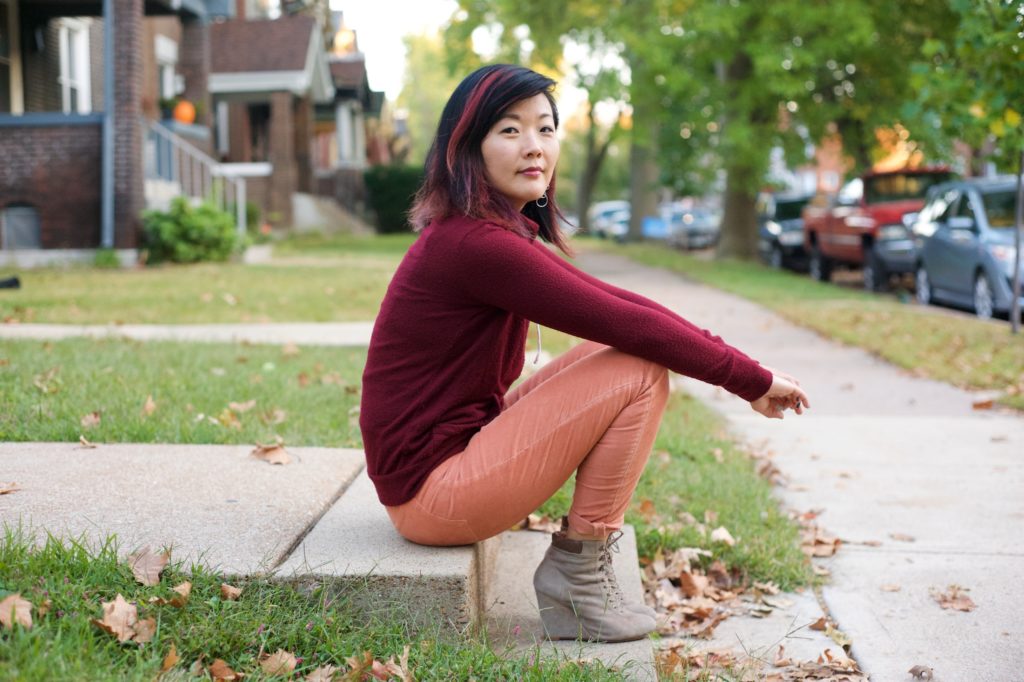
April Fulstone, photos by Lindy Drew
I was on the Literacy Committee and the Building Leadership Committee. Then I was on the Achievement Gap Steering Committee and I advocated for a change in the name. It took about three meetings to decide what the new name would be. Now it’s called the Equity and Excellence Committee, which came from a study of the Lexington School District in Massachusetts a group of teachers and I had studied. The work has been challenging, but I’ve been seeing some progress. And I’m seeing minds open more and more to accept this is a systemic problem that cannot be changed by giving teachers a curriculum or specific strategies. If the majority’s mindset is the way it is and they never question it, then nothing’s going to change no matter how much the curriculum is changed.
If the majority’s mindset is the way it is and they never question it, then nothing’s going to change no matter how much the curriculum is changed.
I’ve been in the district for 13 years. When I was hired, I came from a student teaching experience in Detroit Public Schools. I went to the University of Michigan for a grad program with a social justice cohort and certification. And when I came back to St. Louis, I was looking to work in a school where that kind of teacher was desperately needed. There weren’t that many job openings, but there happened to be an opening in Clayton. I was talking to the superintendent of human resources and I asked her about diversity and what kinds of equity and social justice work was being done in the district. I wasn’t really satisfied with the answers. I was new, so I couldn’t push too hard. I had to absorb and kind of figure out where I was. My first year of teaching about killed me. Once I got my footing, I just kept asking questions and trying to find people who were also interested in asking these questions. The turning point, which I’m sure anybody will tell you who lives in St. Louis who has been working on these types of issues, was after Michael Brown was murdered. More people were interested in having this conversation, which was still not a lot of people.
The school year started and social studies and literacy teachers who wanted to have a conversation said, “How are we going to address this in the classroom?” The tone and general attitude of the administrators basically let us know we were not to be overtly talking about this or making it a big deal. It was making people uncomfortable. I, fortunately, had my Social Justice Club already, so we had that space to talk. But that was only a handful of kids. In my classroom, I talked about it through literacy standards. We were looking at articles and bias: “What’s missing? What’s being reported? Whose perspectives are being shown?” After Michael Brown, so much more was coming up in the media with the murder of Black men by police that it was a theme throughout the year. We would look at current events and it would be that topic.
People were worried that resources being directed toward a subgroup of students would cause the majority of students to go down in performance. And that’s the mindset. That’s why the problem exists. That’s why St. Louis looks the way it does.
I reached out to my colleagues who wanted to address these issues head-on and also at a systemic level in the district. “How are we perpetuating these systems of inequity and, basically, the school-to-prison pipeline?” A small group of teachers and I formed a cohort and met. We weren’t paid for it. We just pulled teachers we knew were interested and met once a month or once every few months to try to get some headway because we were tired of waiting for a top-down change. The superintendent was coming to these meetings because his heart is really in it. He and the president of the board decided we need to make this a priority for the district.
The school board passed this African American achievement gap initiative and, looking at the document, it was very vague and open-ended because the board members admitted that they didn’t really know enough about how to “fix it.” There are three goals in this initiative, and the first goal was that there will be no decline in the performance of the district overall. It was clarified that people were worried that resources being directed toward a subgroup of students would cause the majority of students to go down in performance. And that’s the mindset. That’s why the problem exists. That’s why St. Louis looks the way it does. Because some of us don’t want to share our resources, even though we have so much, too much, compared to many other districts.
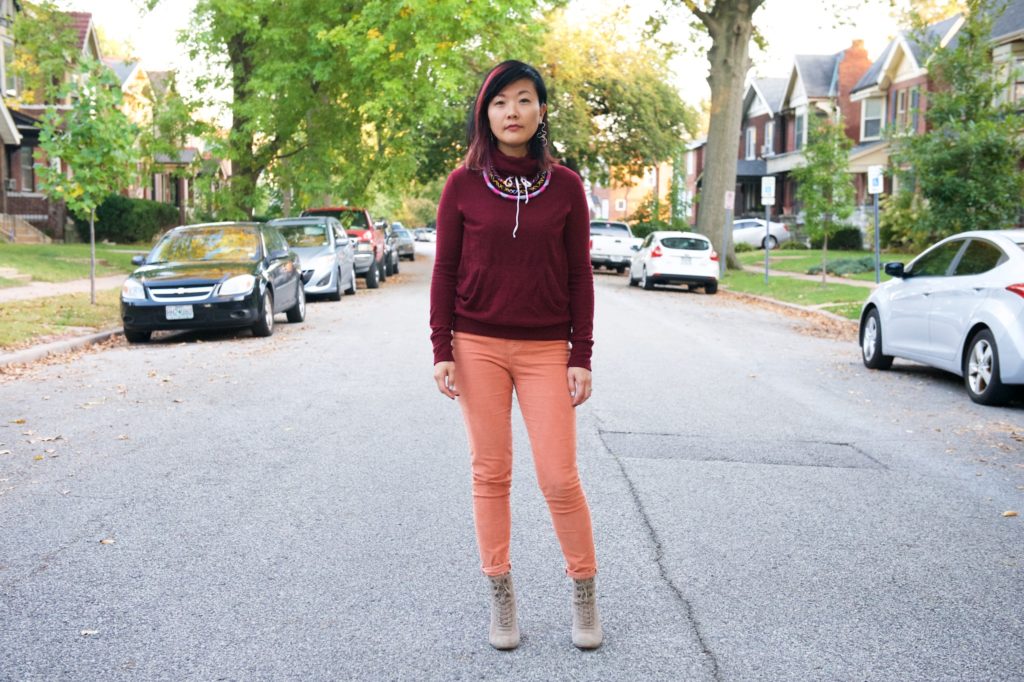
I’ve noticed it’s been a trend that whenever something is proposed or done for the good of African American students in our districts, somebody has to question it. “Why is this happening just for those kids? We can’t do that. We can’t focus energy on just one group of kids. That’s not fair.” There’s this concern with fairness. “Everyone should get the same thing. We shouldn’t be doing special things for certain people,” which is just a complete misunderstanding of what equity really means. When people hear this term, they have a paradigm that they’re working within and it’s usually filled with negative stereotypes that stem from the home. “It’s all the family’s fault. The family doesn’t care about education. The kids don’t have stability. They don’t have the resources.” They’re all excuses that free the educator and the system from any accountability. “Of course, they’re going to fail.” That’s, unfortunately, the undercurrent of a feeling. And people may not admit that, but then why are students failing? Why are so many kids who look a certain way failing and still being passed along like nothing’s happening?
It was proven when a survey was given to staff. One of the first questions on the survey was, “What do you think are the causes of the achievement gap?” The first response was that it starts from birth. Some of the following responses gave the idea that, “Oh well, you know, there are so many things happening in the home. There are so many things that they don’t have that we can’t ever provide.” Just excuses. How are we creating those? How are we widening the gap in our own classrooms and schools? If students come to us with a cultural gap because they’re coming from a completely different community because of the busing system, well, how are we working to close that and give them the tools they need to survive in this system that they’re basically, for lack of a better word, immigrating to?
The other conflict is that we have resident Black students who come from similar economic backgrounds and neighborhoods as the majority but are still lumped into that stereotypical category and addressed in certain ways because of their race. For instance, students who don’t take the bus being told repeatedly that they need to get to the bus after school. Those are the stories people need to hear.
The systems have to change. The teachers themselves cannot do it. Everything needs to be overhauled if you really want to make a difference.
Published state assessment scores have shown a consistent and vast majority of African American students who are not proficient in tested areas. The first couple of equity committee meetings, I felt like I kept saying over and over again, “The systems have to change. The teachers themselves cannot do it. Everything needs to be overhauled if you really want to make a difference.” If we want to see these goals being met, we can’t just expect subtle things to make that change happen. We had to work past the misconception that a few passionate teachers would somehow create an overwhelming trend for change.
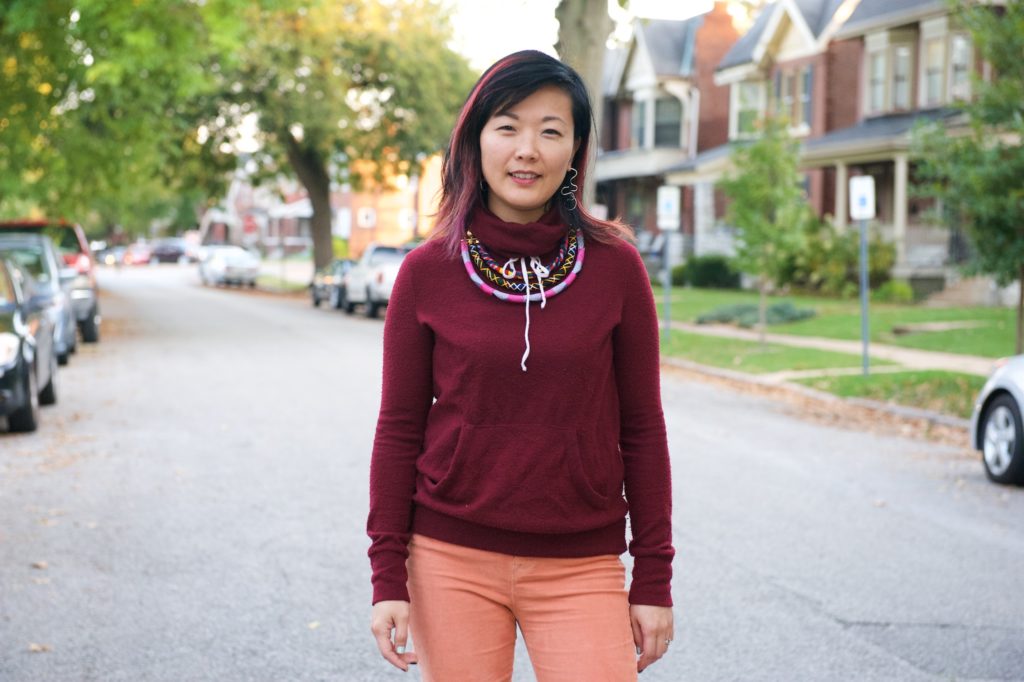
The problem is not knowing or understanding the problem, the roots of the problem, or the historical context. We need to teach our nation’s history to all teachers, and not the textbook version. Math, science, art, and music, too. They need to learn and it should be required. Another parent on the committee said, “If we were rolling out a new reading and math curriculum, every teacher would have to be on board. If they didn’t do it, they would have to go.” But this is more important than a curriculum. This is how to treat kids like human beings. And there’s a resistance to admitting you might have a role in this. Things like the social studies curriculum can be really powerful. For example, the African American history class is an elective. European history class is required. Forever. Since the beginning of school. Who even knows when African-American history became a class? Probably within the last two decades or since the civil rights movement. When you look at an African American history class at the high school, for example, it’s made up of like 90% Black kids. People are like, “I wonder why that is?” Well, if we made European history an elective, do you think most Black students would want to take that?
Schools need to make Black history required alongside European history. Many teachers try to teach multiple perspectives, but the majority of the curriculum is still extremely Euro-centric and White-American-centric. There are some sprinkles of minority voices but, usually, they’re oppressed voices. The challenge is that it is work to find resources that tell other stories – the canon, the textbooks, that teachers have access to, all tell a fairly one-sided story of our culture and history. And this is the story teachers and parents were taught when they were kids. Access to extra-curricular activities is another area of concern, as well as some of the elective curricula that can be Eurocentric and White-American-centric. I’m not saying that White or European culture shouldn’t be valued. I’m just saying we need to recognize that America has always been diverse and continues to become more so, and our classrooms reflect that.
We’ve even talked to our superintendent about making part of the teacher evaluation system incorporate cultural proficiency as a strand and, recently, technology was added as a strand. Teachers had to show proficiency in using certain technologies to show they are attempting to grow professionally. We’ve offered a lot of cultural proficiency related professional development sessions that teachers lead and the same people keep coming because it’s voluntary. The argument is you can’t make something like this mandatory because if people aren’t ready, then there will be more resistance to change. But it should be communicated from the highest levels of the district that cultural proficiency is not negotiable. This is not optional. This is what is right for children.
We have a good handful of kids who come from other countries, so we have a lot of visiting professors who have children. African American students make up usually around 20% of the student body. There’s a good amount of Asian kids and a few Hispanic, but it is probably 75% or 80% White. And the staff is not very diverse at all, though it is a goal of the district to improve that.
There are definitely families who push their kids out of the boundaries and ground them in a lot of different perspectives and kinds of experiences, but the majority outside of school don’t see people who don’t look like them in their personal lives.
Additionally, relationships between students seem segregated. If they live in Clayton, for the most part, that’s their world. There are definitely families who push their kids out of the boundaries and ground them in a lot of different perspectives and kinds of experiences, but the majority outside of school don’t see people who don’t look like them in their personal lives. If you only see people at school who are very different from you, then you’ll never fully understand how different people are like you. And some teachers, aside from elementary school, don’t take the time to build that into the class time so students can deeply get to know each other or talk about issues like racism.
Last spring was the first time I did an explicit lesson about systemic racism with all my 7th graders. I sent an email home explaining the rationale. Overwhelmingly, the reception was positive from the parents: “Thank you for talking about this in the classroom. This needs to be happening.” There were a few kids who were really uncomfortable and just wanted to disappear. They looked disengaged. I did an exit card at the end asking, “Tell me how you feel? Do you need to talk more about this? Do you feel upset?” I wanted to know how they were processing. One kid said, “I didn’t learn anything new.” And I knew that wasn’t true because I just wasn’t buying it. It’s like he didn’t want to learn anything new and he blocked it out. At the beginning of this school year, we read a pretty objective article from the LA Times about Colin Kaepernick and his protest and why. But, some students were focused on one detail in particular – Kaepernick’s socks, which had the police depicted as pigs. Even after the reporter mentioned the harassment that Kaepernick repeatedly experienced at the hands of police because of his skin color, some students could not get over the socks being offensive or why he would feel that way. Generally, people place their values over the actions and motivations of others rather than really listening to why someone may feel, live, or think differently from them.
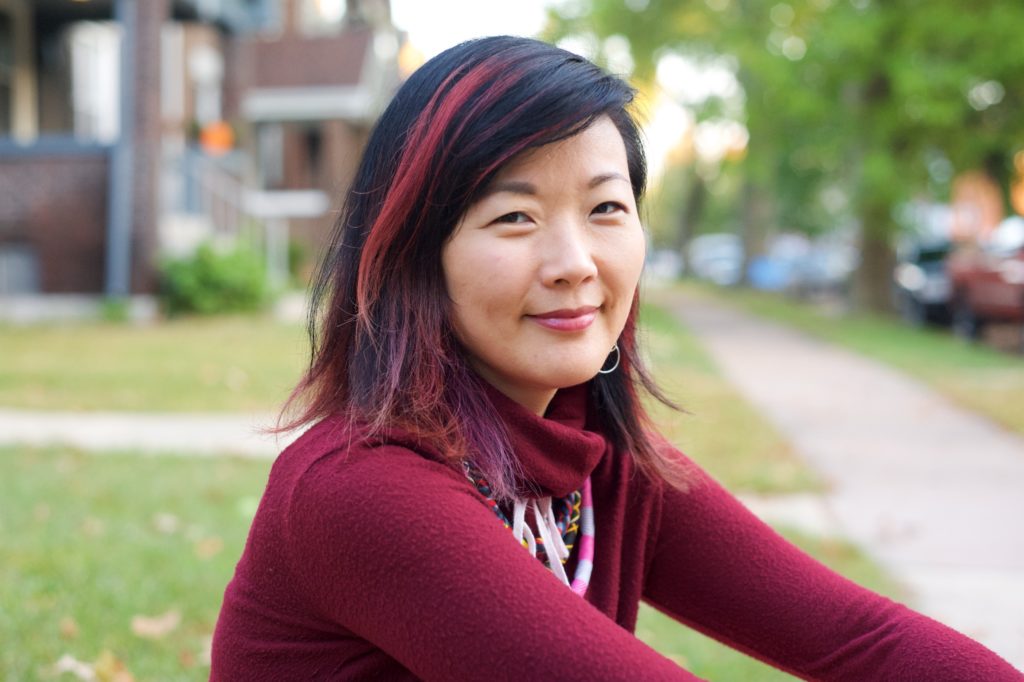
People are much more open now than ever to questioning the constructs of race and how that affects others. During that systemic racism conversation, it really depended on how many Black students I had in the class because of safety in numbers. If I want to say something in class, I want to know I’m backed up. In one of the classrooms I had with a larger number of Black students, they were much more open about sharing some of their experiences. One girl said, “I went to Walgreens the other day. I was looking for foundation. And I couldn’t find anything that matched my skin tone.” That’s a simple thing the other girls don’t think about. Another girl shared in that same class that she and her mom went to Frontenac Plaza, that fancy mall. They were in Saks walking around and she just felt like this salesperson was watching them. She said, “I don’t know if I was being paranoid, but I really felt like we were being treated differently.”
Those kinds of stories are so powerful when the kids share that they’re going through stuff you would never have to go through or maybe ever think about. Another student has a mother who went through the deseg program and is on the Equity and Excellence Committee. He shared about a relative of his who had to deal with multiple outstanding tickets in multiple municipalities and ended up in jail even though she had a small baby at home. That’s the stuff that the majority of kids in my class don’t personally connect with because they’re so removed from that perspective. But, to hear a kid say a loved one is going through this for no reason, I think that holds the most power for kids. It takes so much to really let that sink in because denial is so thick. Denial can have so much power over you. And I’ve been thinking about how much denial this country is encased in. What does it take to chip that away?
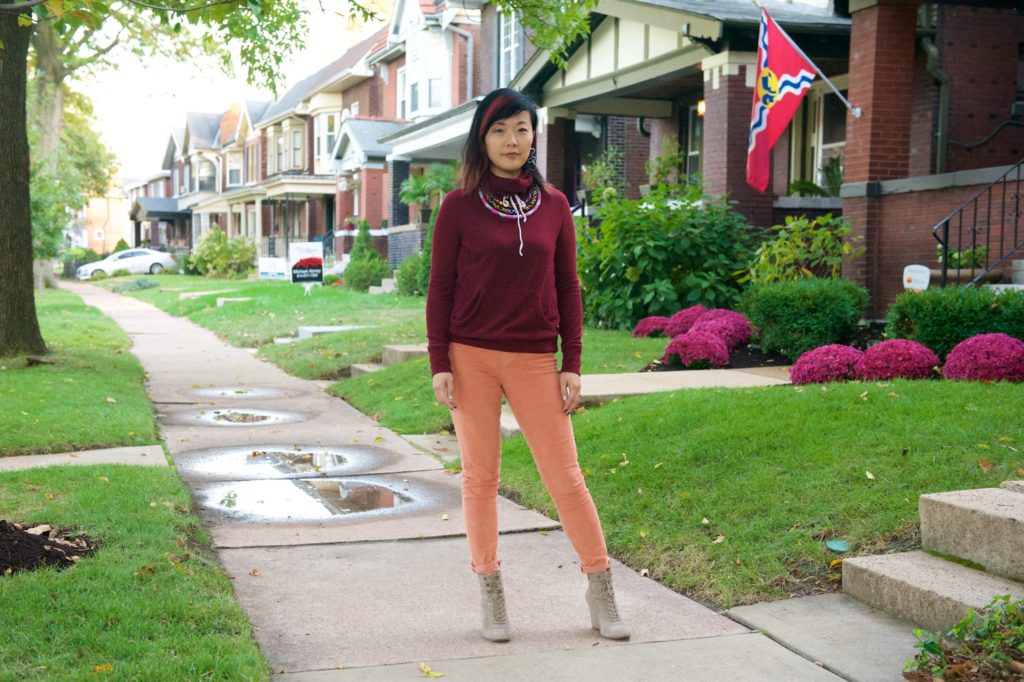
I feel like I have the privilege of being neither Black nor White, to be able to be a neutral party, even though I have had personal, persistent experiences with prejudice growing up Asian in the Midwest. That’s what really opened my eyes to systemic levels of prejudice and racism. St. Louis is overwhelmingly Black and White and so segregated. This is why I encourage White allies to be as vocal as possible in communities like Clayton. Because White Americans who may lack self-awareness of identity and race are going to have a hard time hearing unless it’s from somebody who they can relate to. That’s why affinity groups are usually more effective if they are first going through some kind of equity training. It’s powerful when White allies are vocal, as long as they are truly listening to people of color and working alongside rather than over us.
I can only influence people I directly come into contact with and make connections so that we can build power in our circle and then expand the circle.
It seems like such a giant problem. Where do you even begin to solve it? Unaccredited schools with all the school buildings being closed down just boggles my mind. Very obvious things are happening to schools in certain places for certain people. And people who don’t live there, who don’t have to think about it, don’t see a problem with it. How do you not see a problem? How do people not see the connection? I don’t have any answers. I just feel like I can only influence people I directly come into contact with and make connections so that we can build power in our circle and then expand the circle. This is what I’ve been working on at the district level and that’s been working. It’s just soul-crippling to think about the levels of problems out there with education. Education should be the number one priority on federal, state, city, every government level because the majority of people have not had a good education.
I have a lot of conversations with my own sons about the fact that they go to a school most kids in America don’t get to. The quality of education they’re receiving is not a luxury and it shouldn’t be a luxury, but it is, and they are receiving it. It’s hard for them because it’s the only experience they know. I’m that mom who’s just always trying to make them, force them, to understand stuff they have never seen or experienced. I’m planting seeds. They kind of half listen and then change the subject usually. Then sometimes they ask really good questions and I’m like, “Yeah, let’s keep going with that.”
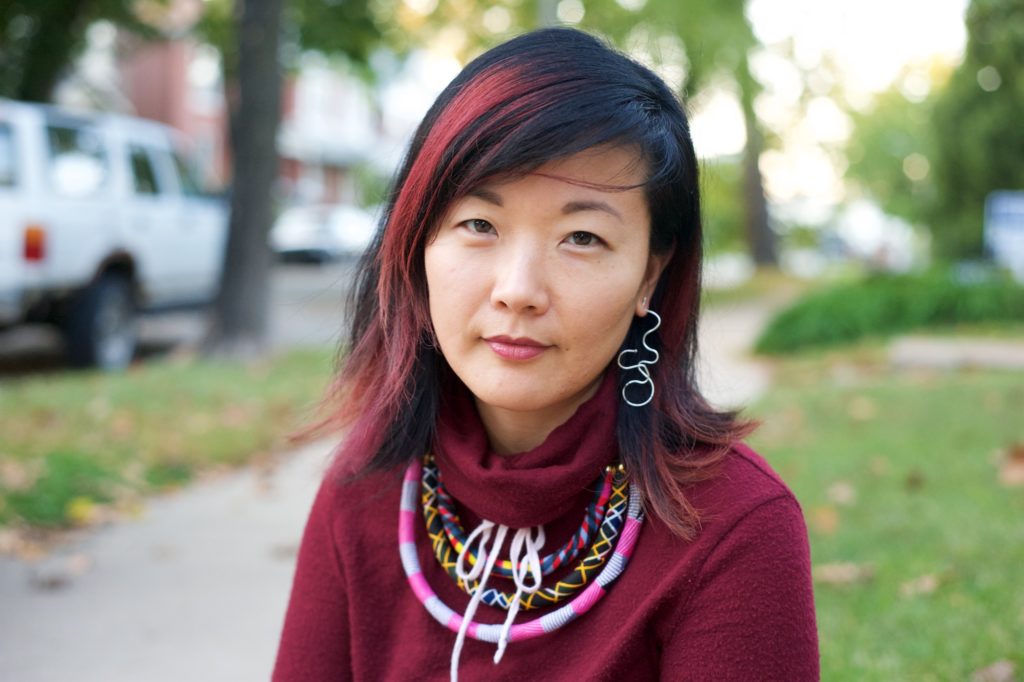
We were at Target two Halloweens ago and one of my sons noticed one of these superhero costumes with muscle arms, but the muscles were his color skin. So he said, “Well, what if you have brown skin and you want to be that character?” It wasn’t prompted by anything other than his brain. I’m like, “Yes! That’s how you think because that’s not fair.” The other thing is that the boys use the terms brown skin and tan skin to describe people. They don’t use White and Black, and I don’t correct them because I like their way better. It’s an objective description and not a racial connotation. Yeah, I’ve definitely talked to them about history, and segregation, and whatever I can whenever it comes up. It’s hard being a parent, dealing with your own kinds of anxieties and grief because of national and local events and then helping your children not be too sheltered. I think about that with my 7th graders that I teach, too. They’re all coming to me at different levels of awareness, and different levels of exposure and experience to the “real world,” or to issues of racism, oppression, or prejudice. I can’t expect them all to master the same things at the same time because they are in different places. I try to make them cognitive of respecting that and to keep that in mind now as I facilitate conversations. Some of us aren’t there and aren’t going to be there for a long time. Some of us are already there and we’re like, “What are you doing?” That’s the hard part on all levels with students, with staff, with the district, with the world, with adults that my children interact with, with everything.
Racial Equity is understanding the systemic obstacles some people have to live on a minute-by-minute basis. Understand that it’s emotionally traumatizing and that whatever we’re doing to level the playing field is not taking away from anybody else’s experience, it’s only enriching everyones.
Equity training has been voluntary. Some say, “Well, it’s really hard on teachers to go through that experience, it takes a lot of time to process, and it would have a really tough effect on the teachers.” But, what about the kids who have to live with racism on a daily basis? When are we going to catch up on that? If we want to be fair, let’s allow teachers to experience what some kids have been feeling for years. Racial Equity is understanding the systemic obstacles some people have to live on a minute-by-minute basis. Understand that it’s emotionally traumatizing and whatever we’re doing to level the playing field is not taking away from anybody else’s experience, it’s only enriching everyones. It’s just seeing people as people and not as an other. It’s questioning why you think certain things and why it’s the first thing to pop into your head. It’s forcing people who think that way to get uncomfortable and to grapple with their identity and what informs those views.
As teachers, are we questioning things? When we hear something damaging to your curriculum, do we hear it or do we defend it? There have been numerous students and parents of color who have confided in me that they have tried to talk to a teacher or administrator about something that offends them, makes them feel unsafe in class, etcetera, but have been dismissed or felt unheard. We have to move away from educators defending ourselves as “not racist” to educators listening to how we can be perceived that way, reflecting on that, and doing right by all kids.
When I took my position in Clayton, I was torn because I felt like I wasn’t doing social justice work in such a well-funded district. However, I eventually came to realize all students from every background need to be pushed to look critically at the constructs of our society. There are incredible teachers and staff who have been truly working hard for all students. We’ve made more progress with openly examining systemic issues in our district since the formation of the equity committee last spring than I’ve seen in my whole time as a teacher. I try to be grateful for the fact that I do have this disgustingly posh job as a teacher. The things people have to deal with as educators in this country are gross on many levels — morally, physically, emotionally. I feel very fortunate to be where I am, and I think my challenge is to never get too comfortable in it.
– April Fulstone, Teacher at Wydown Middle School

